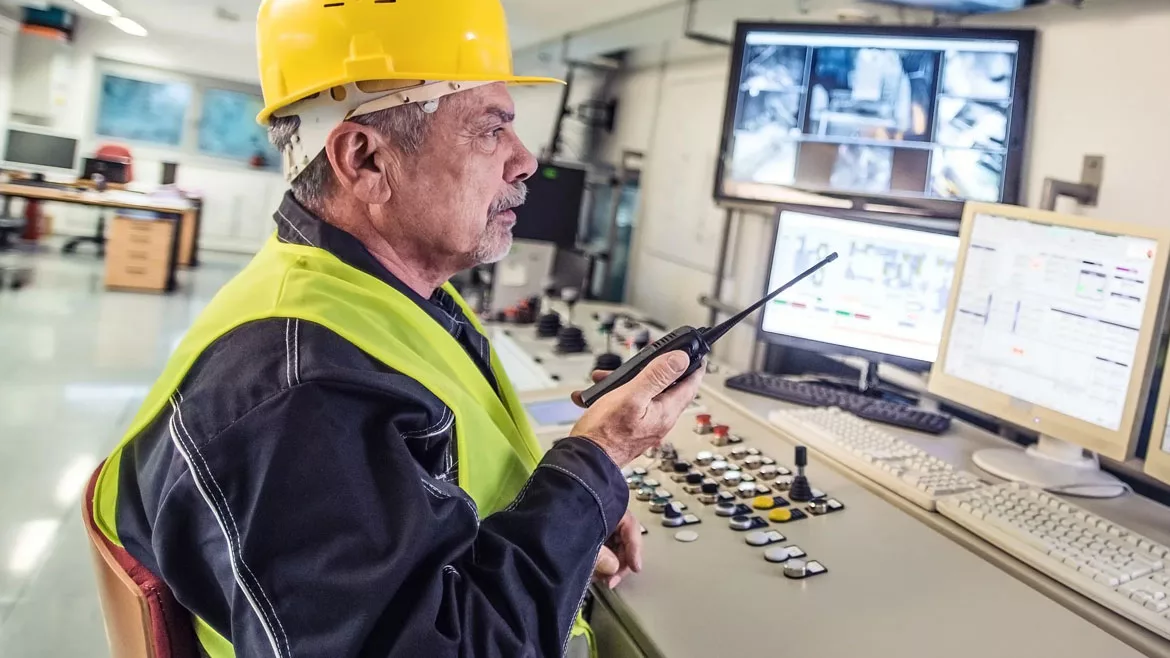Integrated Solutions
Manufacturing safety: Effective planning & communication in emergencies
Creating emergency response plans help keep manufacturing workers safe and protect the business.

VM / E+ via Getty Images
Manufacturers today contend with a myriad of different emergencies and disruptions. On the human capital front, nearly 335,000 manufacturing workers got injured on the job in 2021. The year prior, approximately 136,000 of these injuries resulted in time away from work for manufacturing employees.
Severe weather events also present massive financial and operational risk to manufacturers. Flooding, power outages, extreme cold and hurricanes, among other events, can all wreak havoc on manufacturing infrastructure. Last year, the U.S. experienced 18 weather and climate disasters that each cost at least $1 billion. With severe weather events occurring more frequently — and significant risk posed to both employee well-being and the company bottom line — emergency planning is critical.
The problem? Many manufacturing facilities are not well-prepared for workplace emergencies. However, with better processes and technology, security leaders can turn things around. The keys to successfully navigating emergency situations in the manufacturing industry include reevaluating existing emergency plans; adopting emergency communication best practices; and collaborating with public safety teams — both internally and externally. Each of these steps is vital to creating emergency response plans that keep workers safe and protect the business.
Reevaluate current emergency plans
The first step to improving emergency response in manufacturing is to reevaluate existing plans. Manufacturing security leaders should conduct thorough risk assessments to identify emergency preparedness gaps. This includes checking that floor plans and emergency response documentation reflect the current reality. It also means ensuring that there are protocols in place for all emergency situations — from severe weather events to personnel accidents.
Between the COVID-19 pandemic and technological advancement, the manufacturing industry has evolved rapidly over the last few years, which is why taking stock of potentially outdated emergency plans is paramount. Operators can then use these findings to update plans, processes and outdated technologies.
Simple updates may include publicizing any new emergency plans on the company website and posting information in highly trafficked areas throughout facilities. Examples of more involved interventions include replacing old communication systems and adopting mobile applications, digital signage or radio systems that facilitate emergency response.
Deploy communications best practices
Modern manufacturers also need to update their communication capabilities to the latest standards. Reliable, scalable and multimodal communication is essential for keeping people safe and informed, whether they are onsite or working remotely. Operators should have complete confidence that their communication systems can deliver notifications to workers in a timely and accurate manner. Otherwise, employees won’t have access to the information they need during an emergency and that could result in dangerous outcomes.
With respect to best practices, manufacturers should communicate early and often in the event of an emergency. Notifications should also be clear and include easy-to-follow instructions. Ideally, these notifications can be tailored to certain groups of workers based on relevant factors, such as where people are located or what types of work they perform. This decreases the likelihood of workers succumbing to the “alert fatigue” that can accompany irrelevant notifications and better ensures employees’ safety.
When it comes to determining which channels and modes of communication to use, operators should survey employees, as well as implement strategies that align with the nature of the workforce. For example, Rave’s 2022 Workplace Safety and Preparedness Survey found that 36% of workers prefer emergency communication via text. Survey respondents also indicated that they appreciate emails (41%), intercom announcements (33%) and automated voice calls (24%). By taking stock of how employees want to be notified, manufacturing leaders can tailor their communication plans to more easily and successfully reach employees during crisis events.
The specific mix of channels being used by manufacturers should take employee preferences into account and ensure that timely messages reach remote and onsite workers simultaneously, if necessary. All employees deserve to be updated throughout the lifecycle of an emergency so that confusion is limited and the appropriate response is taken at the appropriate times.
Collaborate with public safety teams
Emergency preparedness in manufacturing, now more than ever, requires collaboration between manufacturers and local public safety organizations. Many teams must coordinate — emergency medical responders, law enforcement, onsite security professionals, employees and employers — to respond quickly and efficiently in the event of an emergency. To facilitate teamwork across various entities, key decision-makers need access to the same set of information.
For example, manufacturers should share up-to-date facility profiles with public safety teams that include details about floorplans, emergency exits, hazardous materials and dangerous machinery so that response teams can familiarize themselves with facilities before they arrive onsite. This enables them to navigate buildings quickly and safely, which can ultimately save lives when seconds count.
Manufacturers can also utilize panic button technology and encourage workers to download the app so that workers are empowered to take a role in their own safety by contacting key company stakeholders and emergency responders directly. Panic button apps accelerate response times for severe weather, medical emergencies and workplace violence including active shooter situations. Once an emergency begins, manufacturers and public safety teams should be able to maintain a secure and open line of two-way communication. This keeps everyone aligned and informed as emergencies unfold.
The path to better emergency response in manufacturing
No matter the time of year, safety must be top of mind for manufacturers. Strong emergency response plans make workers feel safer and valued by their employers. They also have the potential to save lives and reduce damage to infrastructure — and the bottom line. Manufacturers that take the time to reevaluate emergency response plans will be better equipped to face disruptions when they inevitably surface. They will be able to communicate more openly with their workforce and customize plans to serve the unique characteristics of their facilities. They’ll be able to work better with public safety teams and officials in the midst of difficult emergency situations.
Looking for a reprint of this article?
From high-res PDFs to custom plaques, order your copy today!







